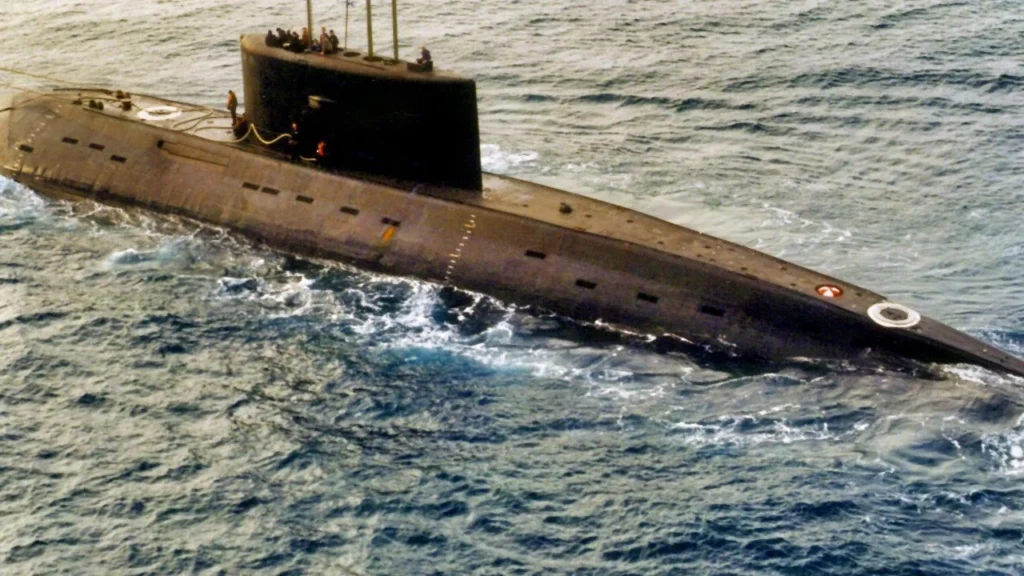The China’s state-of-the-art nuclear attack submarine sank while undergoing final sea checks near Wuhan in May 2024. PLA ARMY NAVY
The People’s Republic of China’s (PRC) most advanced nuclear-powered attack submarine sank in port in mid-2024, according to two U.S. news organizations, an embarrassing incident that PRC officials rushed to cover up. The sinking raised the possibility that the damaged vessel leaked nuclear fuel into the ocean, and it potentially offered another example of how endemic corruption within the People’s Liberation Army (PLA) Navy compromises its operational capabilities.
Reuters and The Wall Street Journal newspaper reported in September 2024 that a Zhou-class submarine sank near Wuhan in May or June, quoting anonymous Pentagon officials. “In addition to the obvious questions about training standards and equipment quality, the incident raises deeper questions about the PLA’s internal accountability and oversight of China’s defense industry, which has long been plagued by corruption,” the official said. The cause of the sinking was unknown, but “it was not surprising” that PLA Navy officials tried to cover it up, the official added.
Defense experts also said the sinking damaged the PRC’s claim that it is a rising naval power. The incident “raises questions about production and safety standards of the PLA Navy’s first-in-class nuclear-powered attack submarine — one of the Chinese defense industry’s most advanced platforms,” said James Char, a China defense expert at Singapore’s S. Rajaratnam School of International Studies, according to Reuters. “As well as sowing doubts about the survivability of the new submarine, it also reminds us of the potential pitfalls armed forces around the world may face when it comes to handling nuclear material.”
The Journal, which first reported the incident, described the submarine as the first of a new class of Chinese nuclear-powered subs. It features a distinctive X-shaped stern designed to make the vessel more maneuverable. Built by the state-owned China State Shipbuilding Corp., it was undergoing its final sea checks at a pier on the Yangtze River when it sank. In early June, according to satellite imagery, cranes arrived to salvage the sub, the Journal reported. “The sinking of a new nuclear sub that was produced at a new yard will slow China’s plans to grow its nuclear submarine fleet,” said Brent Sadler, a retired U.S. Navy nuclear submarine officer and senior research fellow at the Heritage Foundation, a Washington think tank. “This is significant.”
The U.S. has designated the PRC as “a pacing threat” in naval affairs. Meanwhile, the PRC has been increasingly overt in its desire to become the world’s largest naval force. As of 2022, the PRC possessed six nuclear-powered ballistic missile submarines, six nuclear-powered attack submarines and 48 diesel-powered attack submarines, according to a Pentagon report. That submarine force is expected to grow to 65 by 2025 and 80 by 2035, according to Reuters.
The sub’s failure comes amid a continuing PRC crackdown on military corruption. Chinese Communist Party (CCP) General Secretary Xi Jinping recently removed the top leadership of the Rocket Force, the military branch responsible for managing both conventional and nuclear missile operations. The CCP has framed the crackdown on the Rocket Force as part of an anti-corruption drive, particularly targeting officials involved in military procurement, reported The Independent, a British newspaper.

